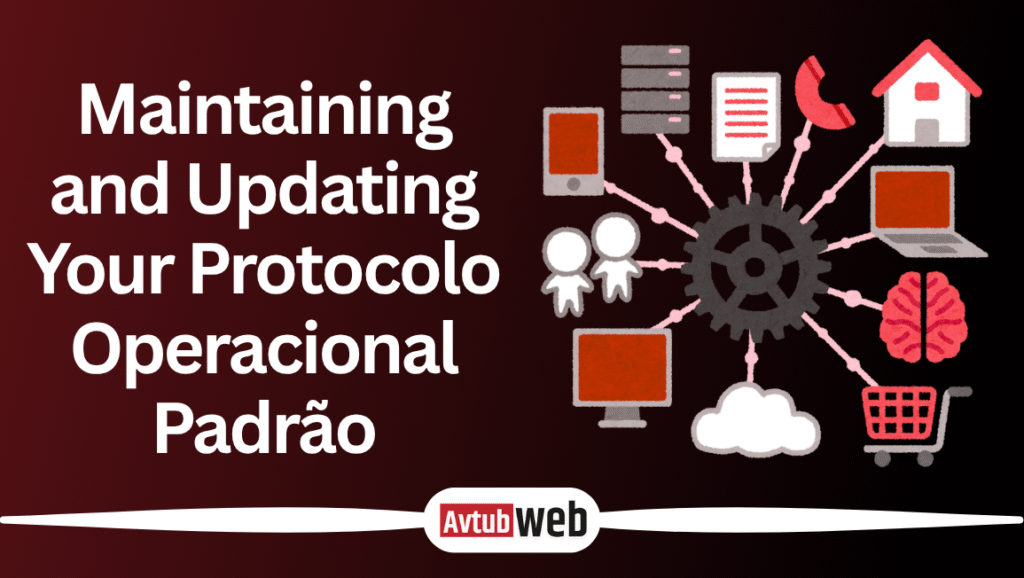Protocolo Operacional Padrão: Your Ultimate Guide
Protocolo Operacional Padrão (POP) refers to a written document that serves as a standard operating procedure within an organizational management framework. This guide explores what POP stands for, why it matters for organizational clarity and consistency, how it supports safety in operations and compliance standards, and how to build a POP that improves operational efficiency while supporting continuous improvement.
What is Protocolo Operacional Padrão (POP)?
POP is a structured framework that documents step‑by‑step instructions for task procedures. It is a detailed document that functions as a procedure structure, identifying roles and responsibilities, and preventing variability in task execution. By utilizing process documentation, a POP becomes an internal standard, a reliable operating framework that fosters process consistency, predictable outcomes, and consistent documentation. It also serves as a compliance tool and operating documentation for quality control.
Why Protocolo Operacional Padrão Is Crucial for Businesses
Businesses rely on POP to promote operational reliability and safe operations. A well‑written POP supports risk mitigation and legal compliance by embedding safety guidelines and ensuring safety compliance. This written guide reduces error rates and helps establish an accountability chain. Organizations gain performance auditing capabilities and establish a performance baseline. POP also supports onboarding speed and training efficiency and helps maintain continuity of organizational knowledge while supporting crisis response and COVID‑19 workflows.
Core Components of an Effective Protocolo Operacional Padrão
A POP usually includes an objective (purpose of the procedure), step‑by‑step method, well‑defined roles and responsibilities, safety protocol, performance metrics, and revision history to support continuous improvement. The written guide helps maintain a structured framework, documentation best practices, and procedure accountability. POP benefits include clarity, compliance, and risk reduction.
How to Create a Protocolo Operacional Padrão from Scratch
Begin by mapping your process documentation in simple language and defining the operating framework. Write step‑by‑step procedures, clarify roles, and embed safety protocols and compliance standards. Add revision history to track changes and set metrics for performance auditing. This task standardization supports onboarding speed, efficiency gains, and process consistency. Treat the POP as a living document and refine it with continuous feedback.
Implementing Protocolo Operacional Padrão in Different Sectors
In healthcare, the WHO surgical checklist—a POP—cut complications from 11 % to 7 %, and death rates from 1.5 % to 0.8 %. That shows how task procedures and safety documentation can reduce risk significantly. In business operations generally, SOPs are known to improve efficiency, reduce errors, enhance quality control, and simplify onboarding.

Maintaining and Updating Your Protocolo Operacional Padrão
Schedule reviews as part of your operational oversight. Conduct procedure audits regularly to confirm compliance standards. Maintain revision history so that updates reflect improvements. This process supports continuous improvement, reduces risk, and ensures documentation consistency over time.
Common Challenges in POP Implementation (And How to Overcome Them)
Some organizations struggle with outdated procedures or rigid documents that limit flexibility. Engagement improves when the POP is practical and accessible. Visual aids in procedure documentation help with comprehension and use. Studies show visual SOPs improve onboarding completion by 75 % and reduce errors during task execution. Overcome resistance by making the POP a helpful, easy‑to‑use guide rather than a burden.
Benefits of Using Protocolo Operacional Padrão in Daily Operations
POP supports operational model reliability, task consistency, and documentation tool utility. Employees follow written procedures that support predictable performance, reduce errors, and maintain compliance. Organizational knowledge stays preserved in a documented process. Training becomes efficient, onboarding speed improves, and the accountability chain is clear. Process standardization saves time and supports quality control.
Tips for Successful Execution of POP Across Teams
Involve team members in drafting to capture practical details and build ownership. Use simple, conversational language and include diagrams when possible. Train staff on the POP and invite feedback so the written document stays relevant. Highlight improvements driven by the POP to reinforce its value, such as fewer mistakes or faster onboarding.
Real-World Examples of Protocolo Operacional Padrão in Action
In surgical settings, following the WHO checklist, perioperative mortality has been fixed at lower rates through reliable protocols. In everyday business, SOP examples, from IT change management to customer service complaint resolution, demonstrate how documented procedures save time, enforce quality, and support compliance.
Best Practices for Monitoring POP Performance and Compliance
Track performance data whenever tasks are done. Use compliance tools to flag deviations from the POP. Conduct audits and compare outcomes to the performance baseline. Documentation consistency helps identify gaps and guide improvements.

Tools and Templates to Build Your Protocolo Operacional Padrão
You can use SOP software or templates (checklist, flowchart, written guide) to support your POP structure. Many platforms help track revision history, simplify onboarding, and improve compliance. Choosing digital tools reduces time spent updating and shares the POP widely.
Making Protocolo Operacional Padrão Work for You
Adapt the POP to your organization’s pace. Treat it as a living internal standard, not just a written document tucked away. Use the procedure structure to guide tasks. Update when needed and celebrate reliability improvements that result from having a solid POP structure in place.
Frequently Asked Questions (FAQs)
1. What is a Protocolo Operacional Padrão (POP)?
A POP is a written guide that explains how to do a specific task in a company. It gives step-by-step instructions so everyone does things the same way every time.
2. Why do businesses use POPs?
POPs help make sure work is done safely, correctly, and without mistakes. They also make it easier to train new employees and follow rules.
3. What should be included in a POP?
A good POP includes the task name, who is responsible, what tools are needed, and step-by-step instructions. It also includes safety rules and a spot to track updates.
4. Who writes the POP in a company?
Usually, a team member who knows the job well writes the POP. Sometimes managers help, and other workers may give input to make sure it’s accurate and useful.
5. Can POPs be used in any industry?
Yes. POPs are used in healthcare, food service, factories, offices, schools, and many other places. Any business that wants clear and safe procedures can use them.
6. How often should a POP be updated?
POPs should be reviewed at least once a year or when something changes, like new equipment, new rules, or better ways of doing the job.
7. What happens if employees don’t follow the POP?
If someone skips steps, mistakes can happen. It could lead to safety problems, poor quality, or rule violations. That’s why following the POP is important.
8. Are POPs only for big companies?
No. Small businesses can use POPs, too. Even a short document that explains how to do tasks clearly can make a big difference.
9. Can POPs help with employee training?
Yes. POPs make it easier to train new workers because they have a clear guide to follow. This also helps them learn faster and make fewer mistakes.
10. What’s the difference between a POP and a checklist?
A checklist is usually short and only lists tasks. A POP explains each step in detail, so the person knows exactly how to do each part of the job.
11. Do POPs improve work quality?
Yes. When everyone follows the same steps, the results are more consistent. That means fewer errors and better quality overall.
12. Can a POP help during emergencies?
Yes. Having a POP for things like fire drills, equipment failure, or health emergencies can help staff act fast and safely.
13. Where should POPs be stored?
They can be printed and placed near work areas or saved on a company’s computer system so everyone can access them easily.
14. What is a revision history in a POP?
That’s a section where you write down when the POP was changed and what was updated. It helps track how the procedure has improved over time.
15. How do I know if my POP is working well?
If tasks are done correctly, quickly, and safely, the POP is helping. You can also ask workers for feedback or look at work results to see if the process needs to be improved.
Conclusion
A well-crafted POP supports standard procedure framework, organizational standards, and operational clarity. It increases clarity and consistency, supports safety in operations, improves training efficiency, and enables performance auditing. Use it to reduce errors, meet regulatory standards, and build predictable outcomes. A living POP supports ongoing risk reduction, quality control, and operational compliance. Let it serve as your business process guide and organizational knowledge in action.



